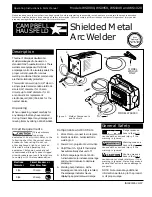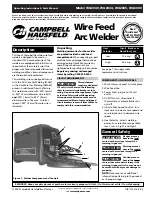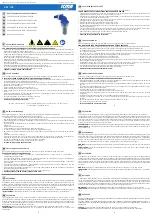
77
EN
-U
S
Electrode burn-out is prevented by activating the anti-stick function. If the rod electrode be
-
gins to stick, the power source immediately switches the welding current off. The welding
process can be resumed without problems once the rod electrode has been detached from
the workpiece.
CEL mode
on / off
Factory setting: off
To weld with Cel electrodes, the parameter must be set to "on".
Dynamic correction
To optimize the welding result
0 - 100
Factory setting: 20
0
Softer and low-spatter arc
100
Harder and more stable arc
At the moment of droplet transfer or in the event of a short circuit, a short-term increase in
the amperage will occur. To maintain a stable arc, the welding current temporarily rises. If
the rod electrode is at risk of sinking into the weld pool, this action prevents the weld pool
from solidifying, as well as reducing the duration of the arc's short circuit. The risk of the
rod electrode sticking is therefore largely ruled out.
Break voltage
Limitation of the welding voltage
25 - 90 V
Factory setting: 45 V
In principle, the arc length depends on the welding voltage. To end the welding process, a
significant lifting of the rod electrode is usually required. The "Uco" parameter allows the
welding voltage to be limited to a value, which permits the welding process to be ended by
only slightly lifting the rod electrode.
IMPORTANT!
If the welding process regularly comes to an unintentional end, set the break
voltage parameter to a higher value.
Summary of Contents for TransTig 170
Page 2: ...2...
Page 6: ...6...
Page 18: ...18...
Page 19: ...General Information...
Page 20: ......
Page 24: ...24...
Page 25: ...Operating controls and connections...
Page 26: ......
Page 33: ...Installation and Startup...
Page 34: ......
Page 41: ...Welding Mode...
Page 42: ......
Page 62: ...62...
Page 63: ...Setup Settings...
Page 64: ......
Page 79: ...Troubleshooting and Maintenance...
Page 80: ......
Page 88: ...88...
Page 89: ...Appendix...
Page 90: ......
Page 92: ...92 Safety symbol S Max shielding gas pressure 5 bar 73 psi Noise emissions LWA 68 0 dB A...
Page 98: ......
Page 99: ......
















































